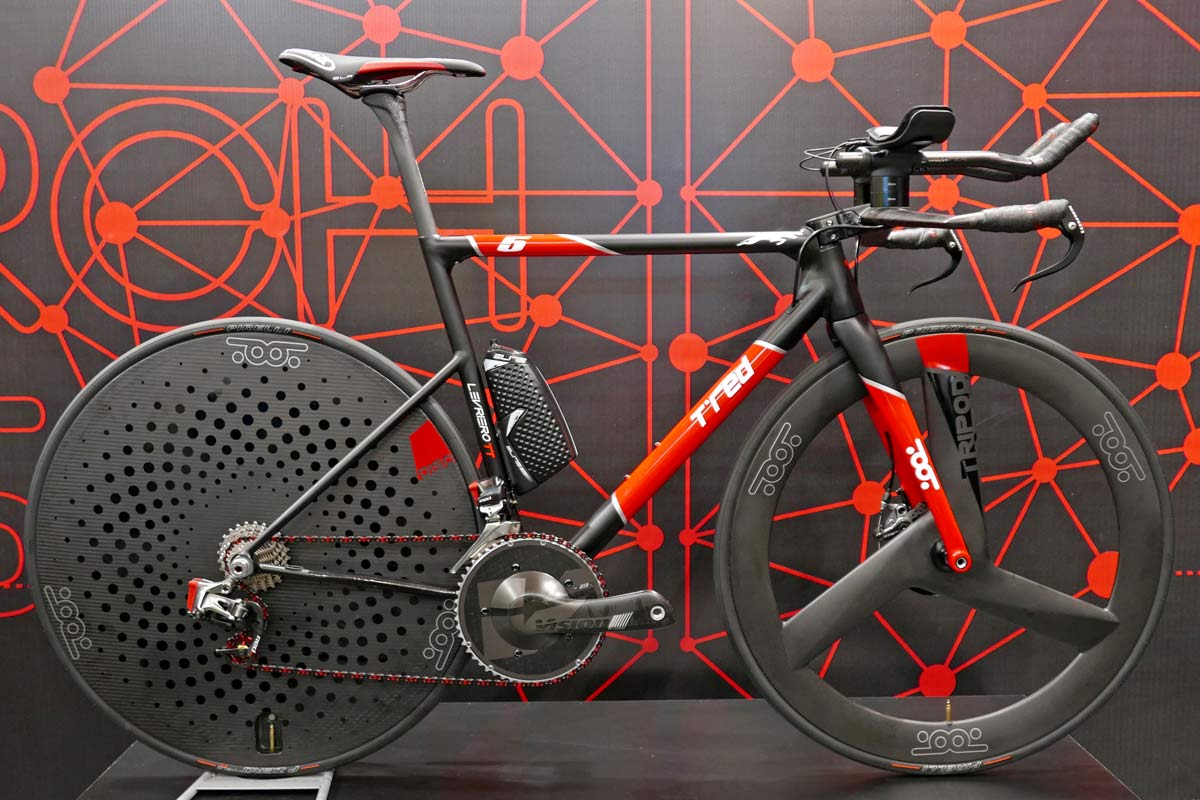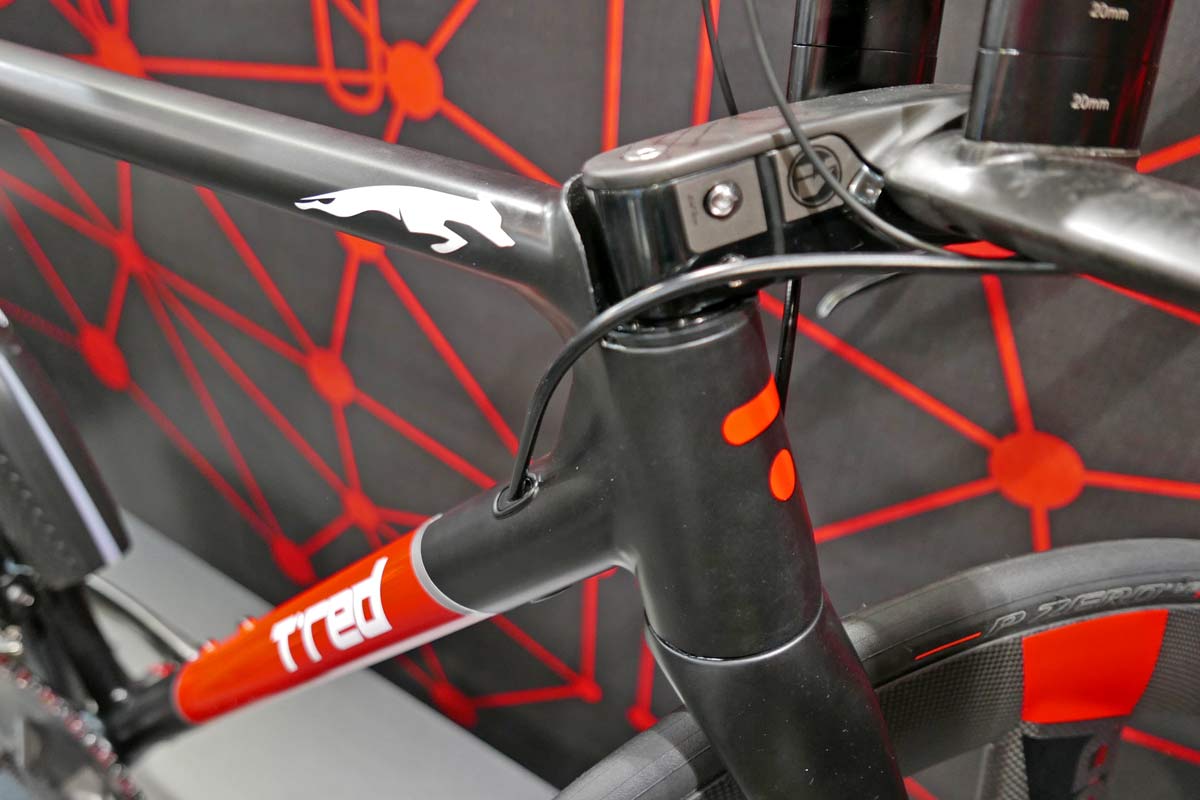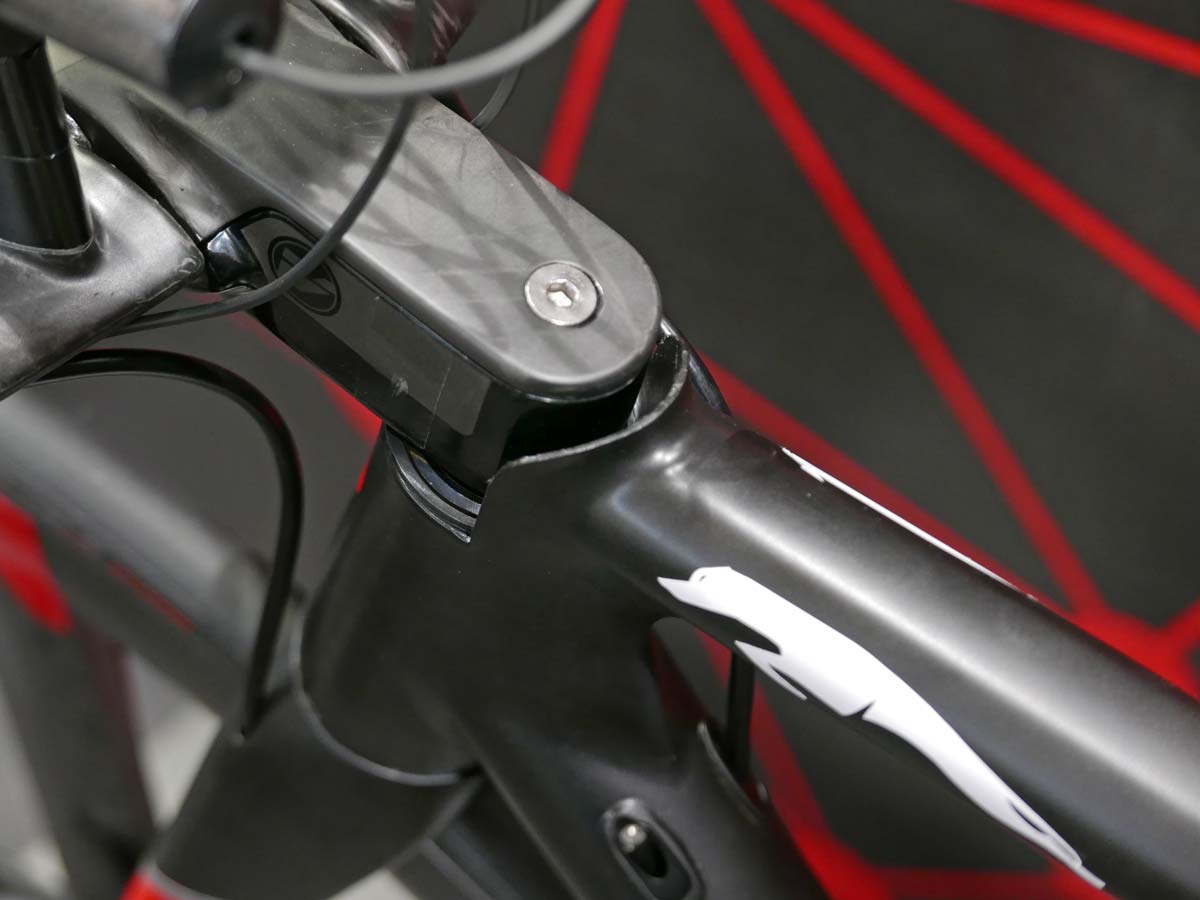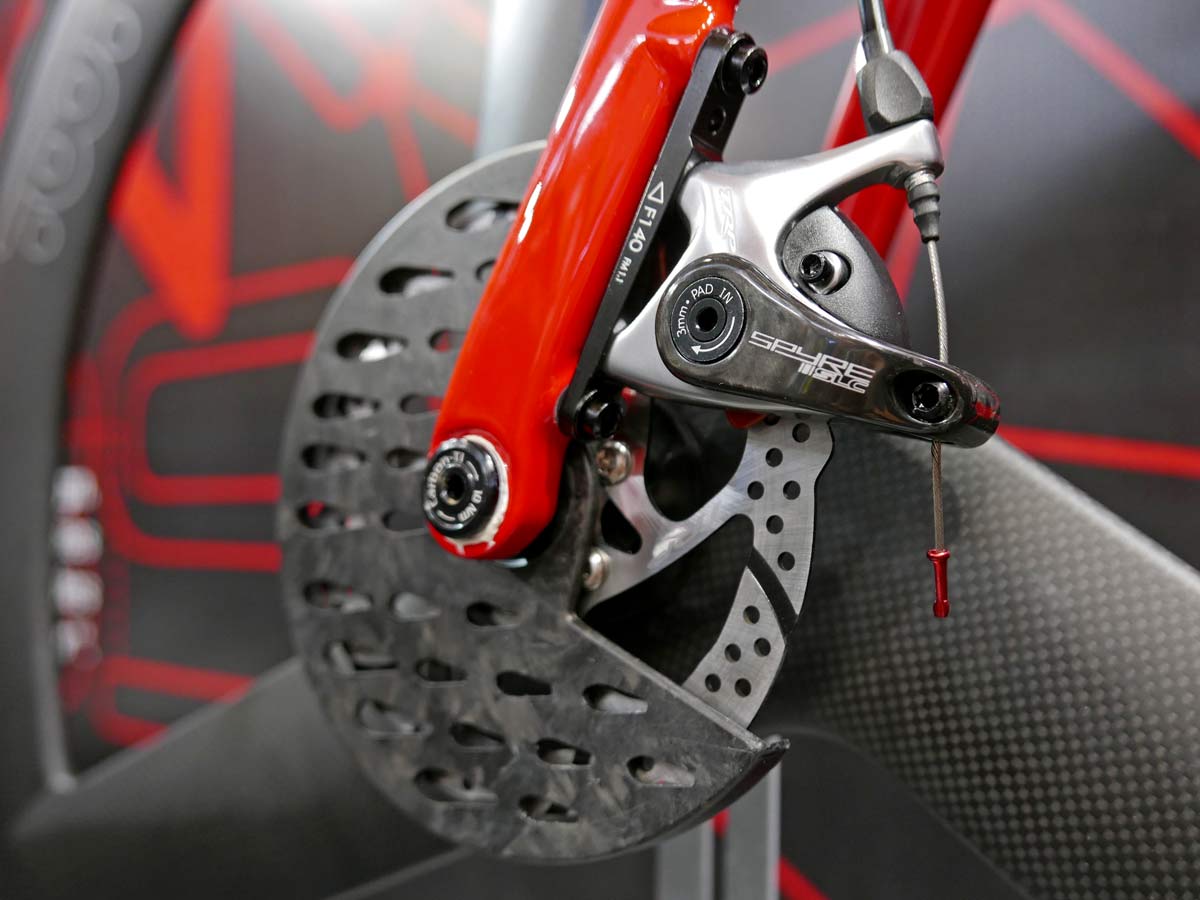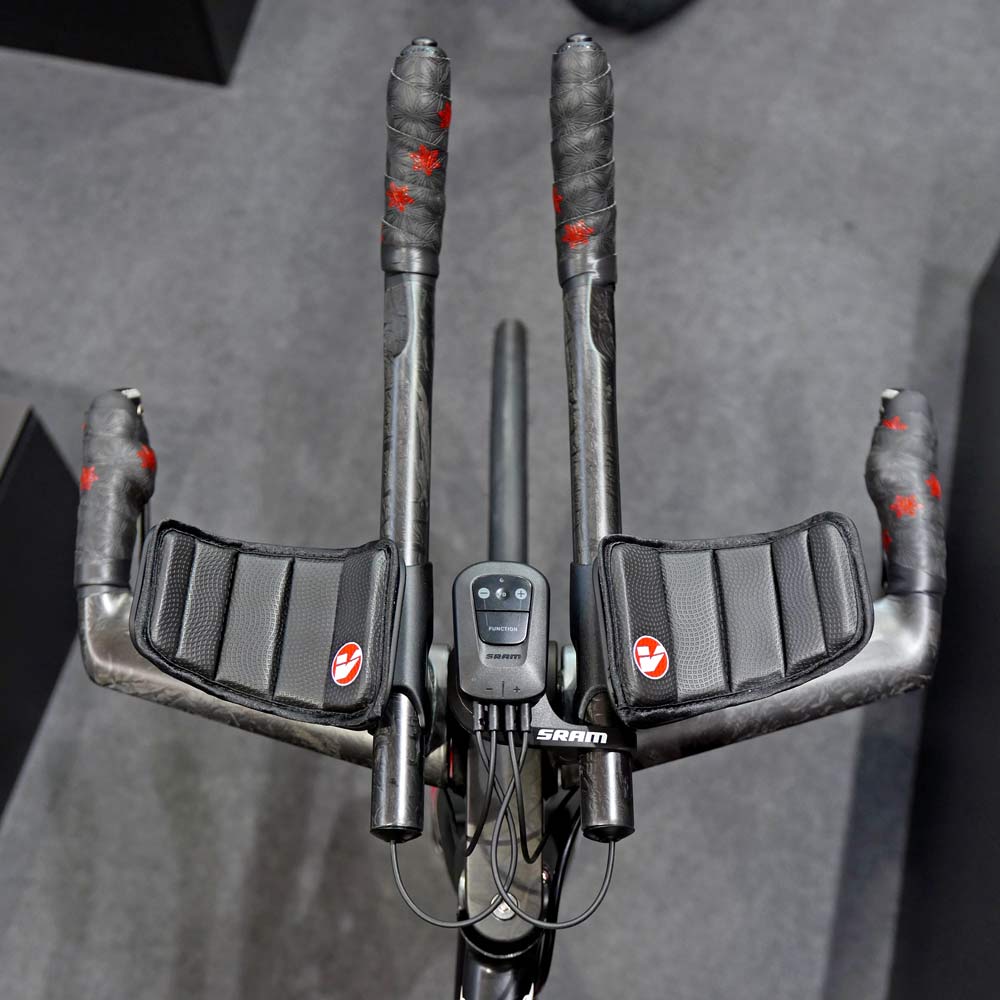Custom Italian frame house T°Red seems to keep coming up with some alternative to conventional bike designs, and their latest time trial bike is no exception. Eschewing carbon fiber and heavy aero tube shaping, the Levriero TT instead opts for a custom drawn premium steel tubeset with remarkable narrow, mostly round tapered shapes. They claim the material reacts to rider and road input to actually roll quicker than most carbon TT bikes. Oh and did we mention that it still does integration right, even getting updated aero protective shrouds for its disc brake rotors.
TRed Levriero TT fillet brazed steel time trial bike
The heart of the bike’s concept is of course the small diameter, super stiff steel tubing, completely fillet brazed together. With the custom drawn, double butted Niobium tubing made in Italy just for TRed, they claim the bike is able to control road vibrations to improve rear wheel traction, and make sure riders stay fresh longer. That could be especially critical in triathlon racing, where athletes need to preserve their legs for the marathon.
The Levriero (Italian for Greyhound) takes its name from the dog track, and that’s where the basic color scheme and numbering originates as well.
Integration is key to getting aero, but so is usability. TRed uses a more conventional internal cable routing setup through the downtube, and uses a threaded bottom bracket, although they go for a T47 to get max drivetrain & handling stiffness.
TRed also claim that the small diameter tubing, tapering towards the rear of the bike is almost as slippery in the wind as many carbon TT bikes. There’s no arguing from us there. Sure, the short headtube isn’t especially narrow, but the rest of the bike disappears when you look at the bike directly from the front.
More than comfort, TRed talked about the steel turning frame flex into forward motion, capturing energy and returning it, rather than carbon which just seems to make it disappear.
More integration if evident at the dropped headtube and shaped front end. That shortened headtube does sink the stem down and out of the wind with a hooded connection into the top tube. This provides the bike with the ability to get super low, but still allows more flexibility and keeps drag from stem to bike in control.
Those vented carbon disc brake covers, which we saw back at the height of the UCI:peloton’s arguments over the danger of rotors, get updated as well with fancy tear dropped aero vent holes. Available for 200€ for the pair, the Donchisciotte (Italian for Don Quixote) carbon covers use a unique installation method that has you heat shrink a spacer to lock them into place, becoming fixed to your axle end caps. TRed says it is a simple process (and they can be removed) and promised some to test out.
The Levriero TT is available in three complete bike builds – the 1, 3 & 5. This top-level Levriero 5TT retails for a whopping 10,590€ with a SRAM Red eTap chrono setup with extension mounted blips, plus the Vision Trimax and TRed’s own TOOT carbon tri spoke & disc disc rear wheel.
The 7590€ Levriero 3TT gets a mechanical Red group, alloy basebar, and lower spec’d wheels. At 5990€ the Levriero 1TT steps down again to a Force level drivetrain.
TRed also sells the bike as a frameset alone. It still comes in 1, 3 & 5 variants and their respective gray, yellow & red paint schemes. Each frameset looks for be the same other than color and includes frame, fork, seatpost, headset, bottom bracket & mechanical disc brake calipers. They still vary from 2990€ for the 1, up to 3490€ for the 5.

